
Brayn Wills is an experienced writer passionate about customer service and relationship building. His expertise encompasses help desk management, customer communication, AI chatbots, knowledge management, lead generation, and more.
Learn about Our Editorial Process Expert Writer Updated: 2 Sep, 2024
Comprehensive project documentation is critical to successful project management as it serves as the roadmap that guides teams from conception through completion.
It ensures all stakeholders have clarity around project goals, timelines, responsibilities, and progress, fostering transparency and accountability.
Without it, you could lose your valuable time and resources. In 2021 alone, teams spent 140 hours in meetings that could have been avoided.
In this blog, we will talk about the importance of project documentation and how to create it. We will also explore some project management templates and examples and learn how to choose robust project documentation software.
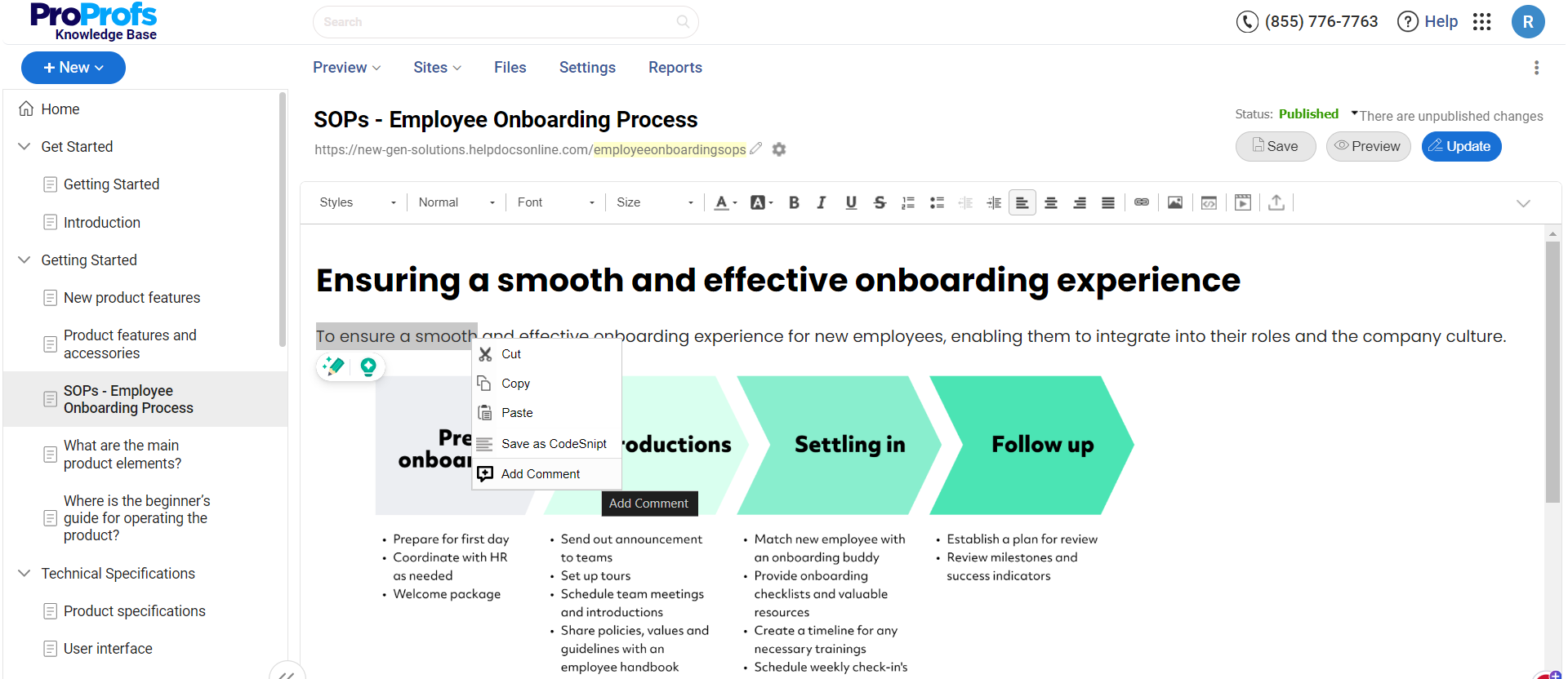
From the previous step, it is clear that project documentation is a comprehensive resource that is impossible for a single person to manage. You need a strong team with the dedication and passion to record all that goes on in the project consistently – every milestone achieved, deadline met, or change requests accepted!
By deploying a tool like ProProfs Knowledge Base, you can add users and assign relevant roles and permissions to each one of them. For instance, some users can work as contributors – the ones who will do all the writing work, and some can take charge of editing all that’s written to ensure quality is not compromised.
You can also assign the administrator role to users who have proved themselves to be capable managers. They are the ones who will take up the responsibility of overseeing every activity happening in the documentation, identifying gaps, and taking timely steps to ensure smooth operations.
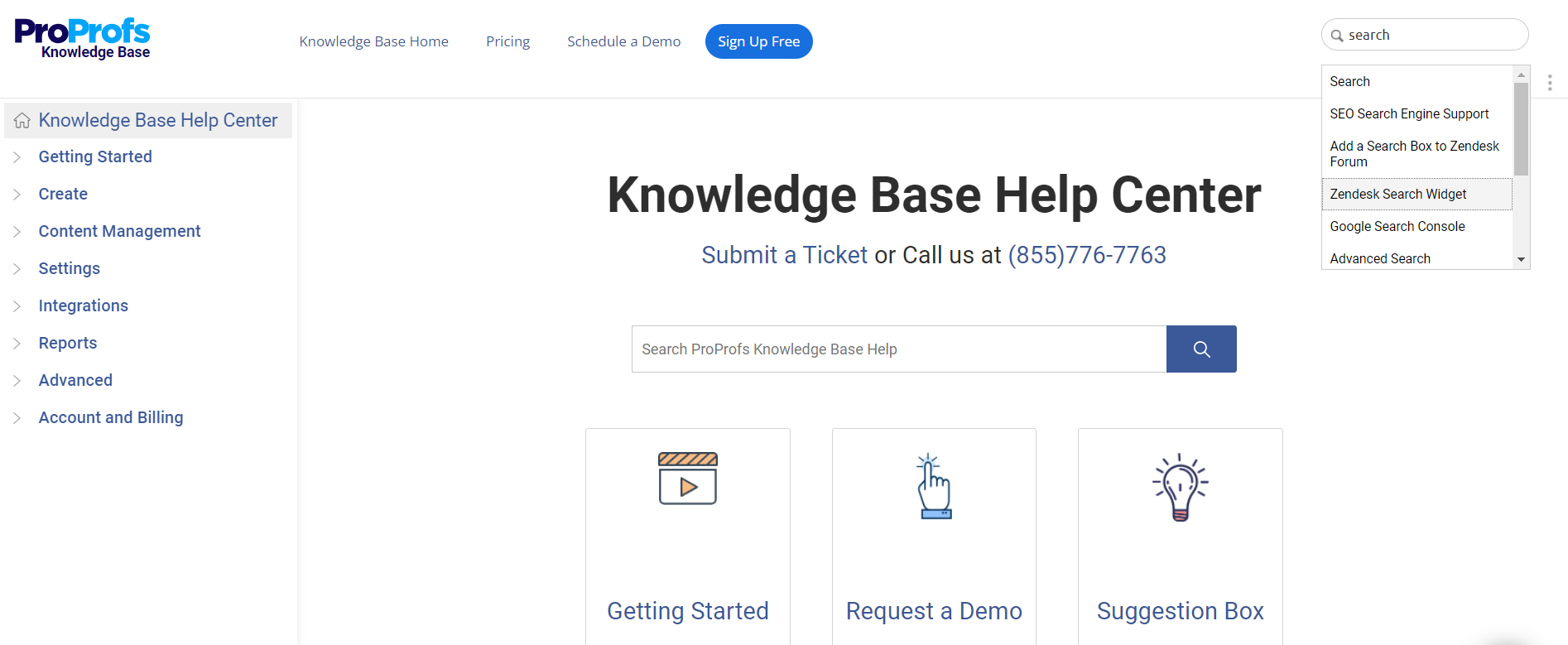
Project documentation loaded with helpful information but lacking a logical structure is counterproductive. An unstructured document will likely confuse your team members and make them confused and indecisive.
Once you have all the information, try giving it a proper structure. For example, you can create broad topics and their sub-categories to fit all project details. You can also make a table of contents enlisting all sections and subsections of the document.
Follow a stage-by-stage approach while structuring the document. Start by adding topics related to the initiation stage and then drill down into more complex topics on project execution, closure, progress reports, change management, etc.
For best results, you can use internal article linking to make information search even faster. This will save your team from mindless browsing and help them get what they need in just a few clicks.
Project documentation is supposed to be highly reliable and comprehensive. That’s precisely why all team members should collaboratively work on the document right from the start to ensure high quality and accuracy.
Creating articles is a heavy task and can take up much of your team’s time. In such situations, it’s natural for your team to sideline the review process and pass the content for publishing without taking a second look.
Inaccurate information can wreak havoc on your projects. It can spread wrong facts in the team and completely change the track of the project. Therefore, reviewing and analyzing every article is essential before taking it live. As and when articles are created, they should be thoroughly reviewed by editors and subject matter experts before publishing.
The best project documentation tools out there come with a dedicated workflow review and approval system that allows you to track the status of each article right from the time it is written to when it finally gets published. This reduces the chances of any article skipping the review process.
The project management process is not static, so how can your document remain unchanged? As your project progresses, there will be multiple changes in its plan, scope, client requirements, etc. Maintaining project documentation ensures that teams always have the most updated information at their fingertips.
As project documentation best practice, your team must keep checking the document for any inaccuracies and update it with relevant information. Manually tracking and making all the changes can consume more time than required. Instead, you can use reports to track document performance and identify knowledge gaps.
For example, if you want to identify poorly rated articles or articles that are the most helpful for your teams, you can track metrics such as article upvotes and downvotes, total views, and reads. Once you know which articles are poorly received by project members, consider improving them.
You can also go through the comments left by team members to identify their pain points and take timely steps for performance improvement.
Creating project documentation is the key to ensuring clarity, alignment, and project success. It serves as a roadmap for your team, keeping everyone on track and focused on the project’s goals.
To help you create a stellar project document, here are seven best practices to follow:
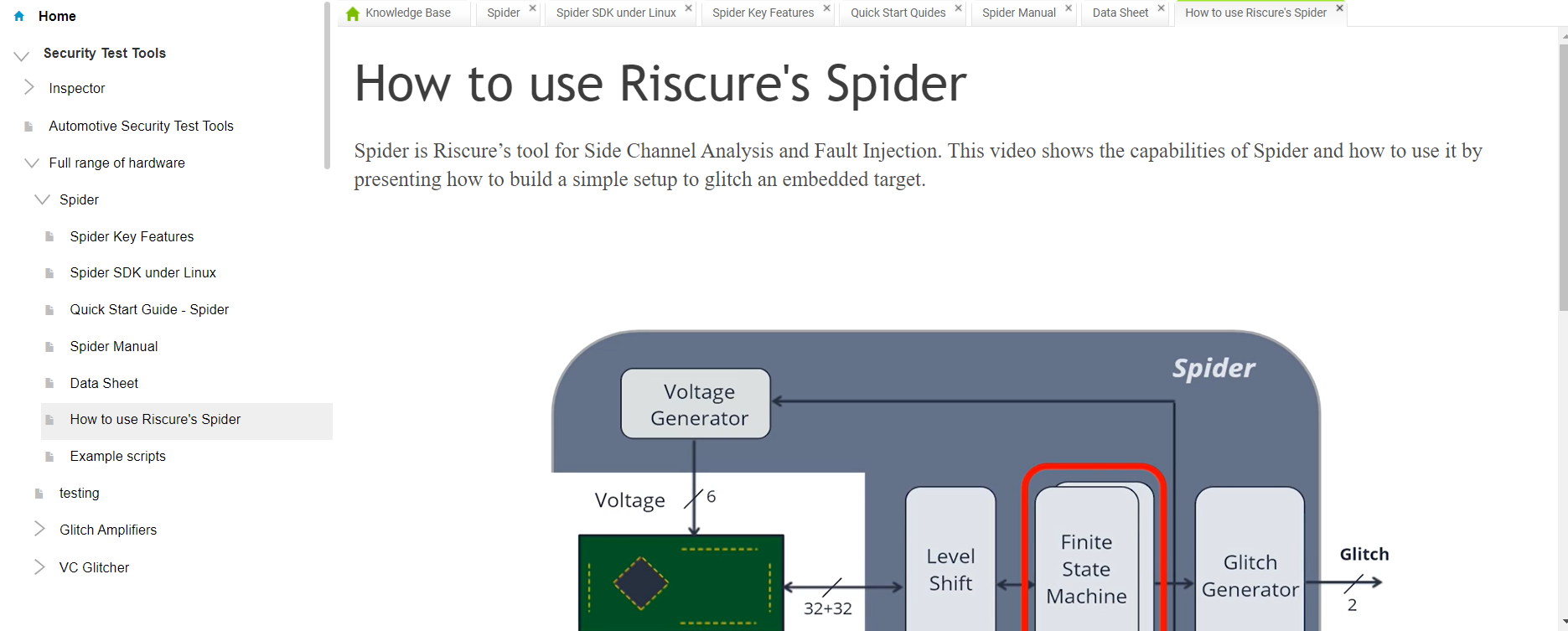
Incorporate interactive elements into your project document to enhance user engagement and understanding. You can utilize clickable links, interactive charts, or multimedia content to give all project stakeholders a dynamic and immersive experience.
Interactive features and visual elements help present information in an impactful way, making it easier for stakeholders to grasp complex concepts faster.
Project documentation is only helpful if teams can access it on their mobile devices when needed. You can optimize the document’s layout and design to ensure easy access and viewing on smartphones and tablets.
Creating a mobile-friendly document enables stakeholders to access the information conveniently, even while they are away from their desks. This flexibility promotes better collaboration, decision-making, and responsiveness among the project team.
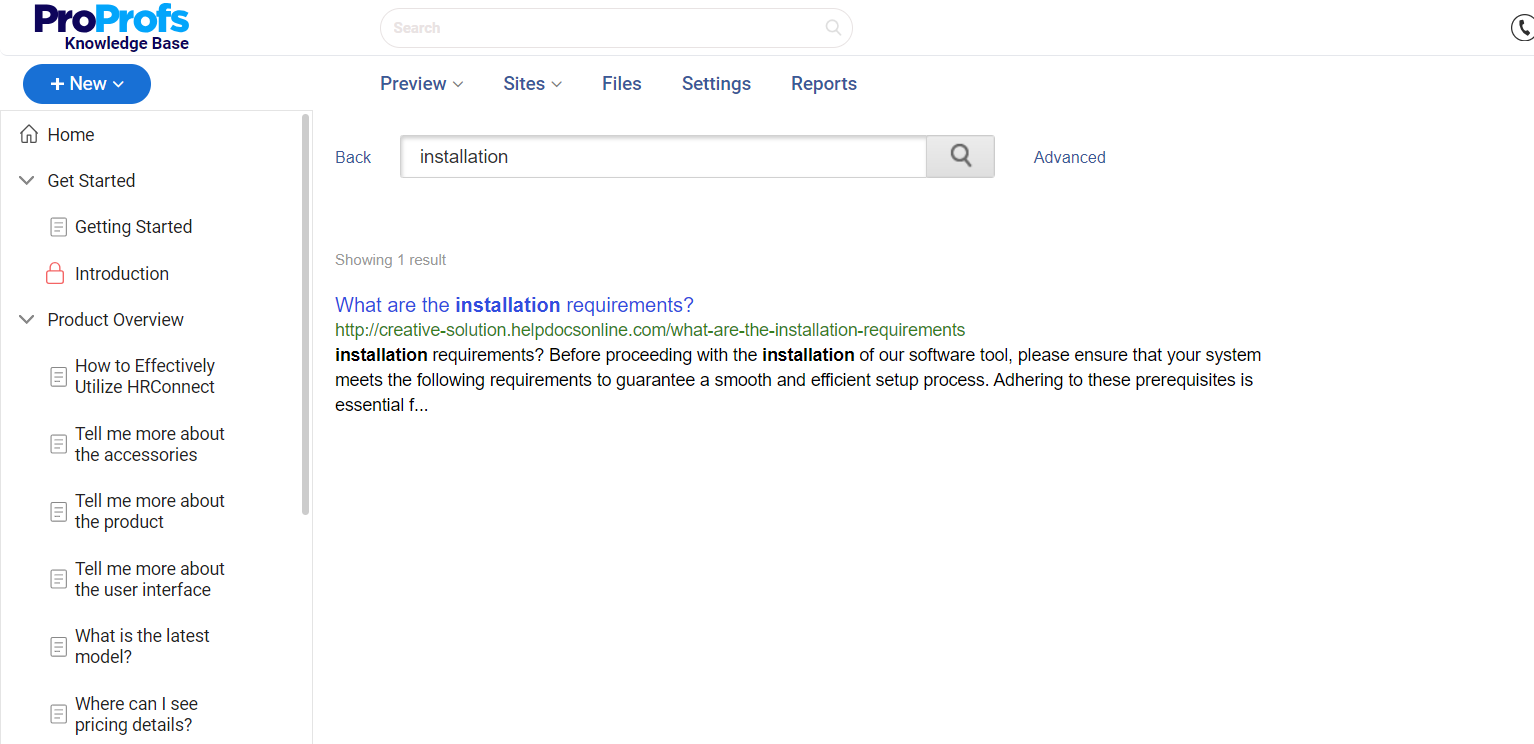
Searchability and navigation are two crucial elements that should not be ignored. You can implement a logical structure within your project document, using headings, subheadings, and a table of contents to facilitate easy navigation.
Additionally, you can incorporate a search function that lets stakeholders quickly locate specific information within the document. A well-organized and searchable document saves time, enhances user experience, and ensures your teams get everything they need in seconds.
Kickstart your project document by articulating clear and concise objectives. These objectives serve as the guiding light, giving your teams a clear idea of what the project aims to achieve.
As you start creating project documentation, clearly state the project’s purpose, desired outcomes, and measurable goals. Avoid ambiguity and ensure stakeholders have a crystal-clear vision of the project’s direction.
With clearly defined objectives, you can build a solid foundation for the project, align the team’s efforts, and drive action toward a common goal.
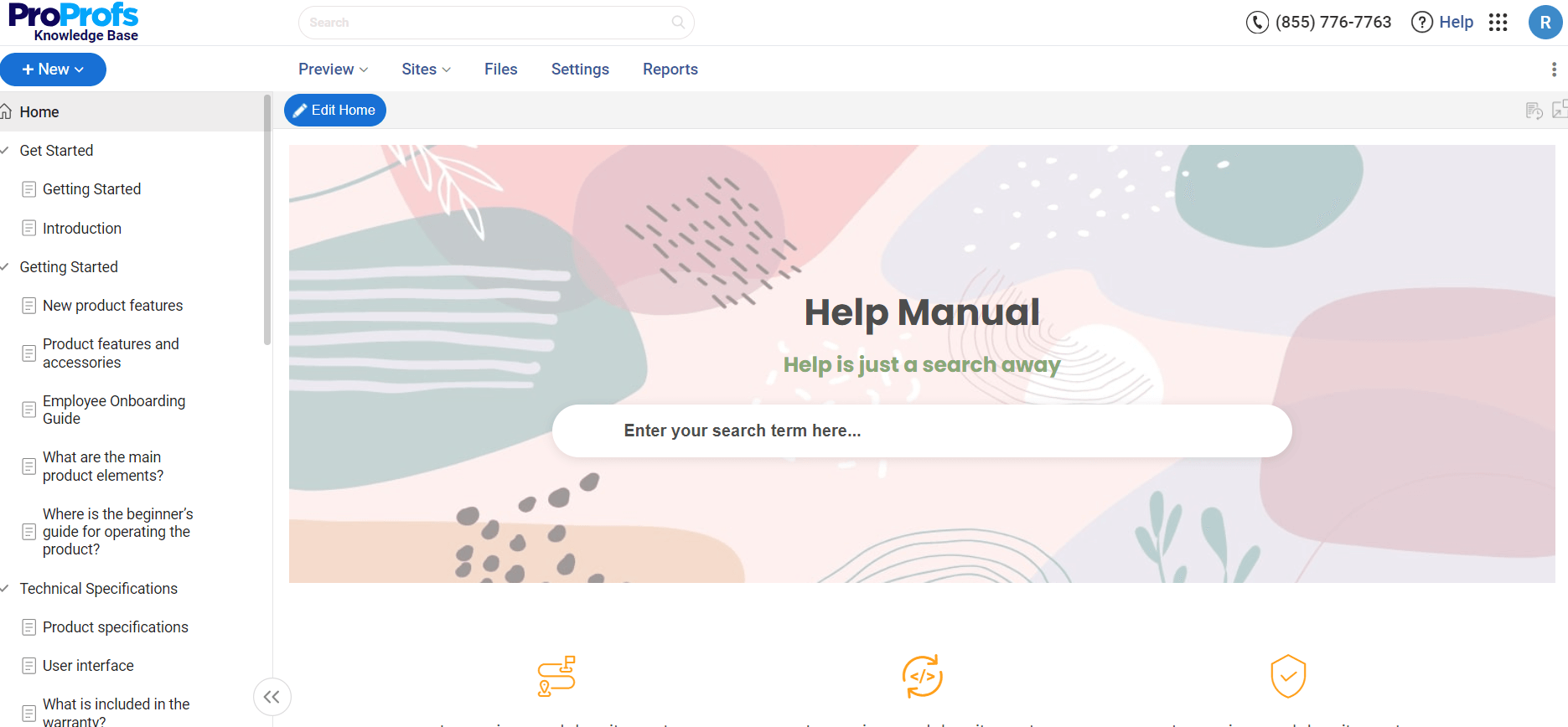
Deploying the right project documentation tool can give your efforts the much-needed boost. It will equip you with all the bells and whistles you need to get started in the right direction and achieve an impressive document.
When investing in document collaboration tools, look for one that aligns with your team’s needs and offers collaborative features, version control capabilities, and customization options. With the right tool in place, it will be easier for your team to make content curation collaborative and simplify document management.
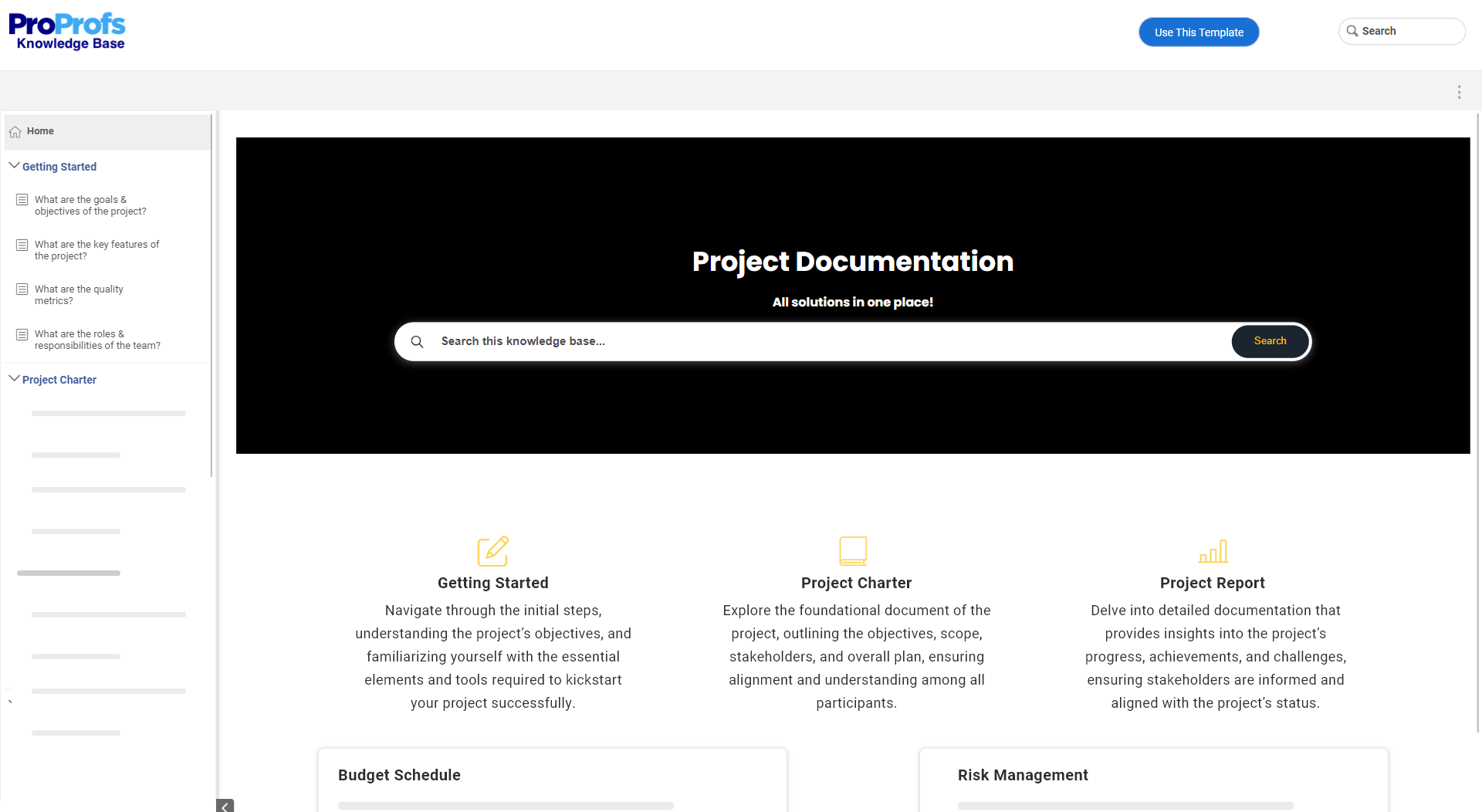
Writing project documentation can mean spending days or weeks doing the initial groundwork. What if we told you there is a shortcut to the process?
Project documentation templates offer a ready-made framework, so you don’t have to do the heavy lifting. The templates take a lot of pressure off your shoulders by giving you a pre-defined table of contents, topic-relevant sections, a dedicated space for branding, and much more.
With these beautiful templates, your work is reduced to half, as you don’t have to work on a blank canvas. As your project progresses, you may want to expand the template by adding more categories and information.
ProProfs Project Documentation templates are diligently designed with a table of contents and pre-defined sections to make documenting a breeze.
This template for writing project documentation is a good starting point. As your project evolves, you can keep adding more categories, pages, and articles to keep it organized and structured.
While the documentation is quite comprehensive for large projects involving multiple change requests, documentation for small projects is mostly limited to the basics.
Let’s explore some of the common examples of project documentation.
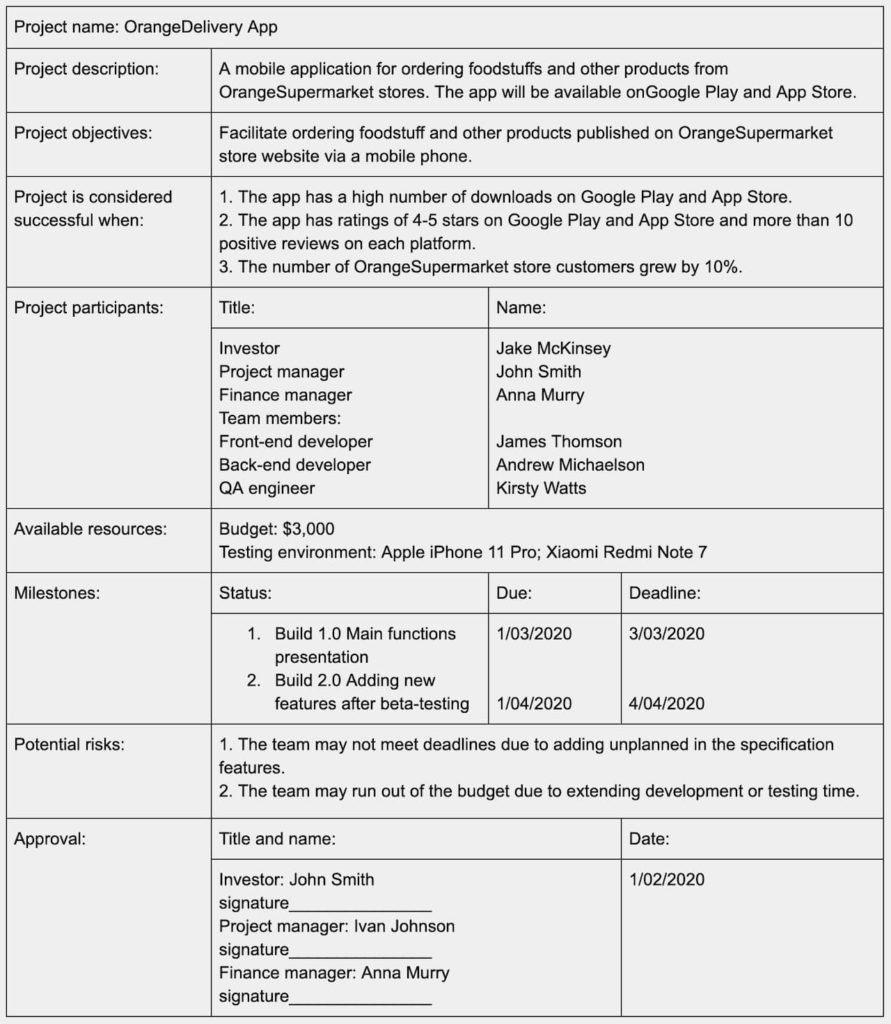
It marks the project’s official start, defining its purpose, objectives, scope, and stakeholders, aligning expectations, and granting authority to the project manager.
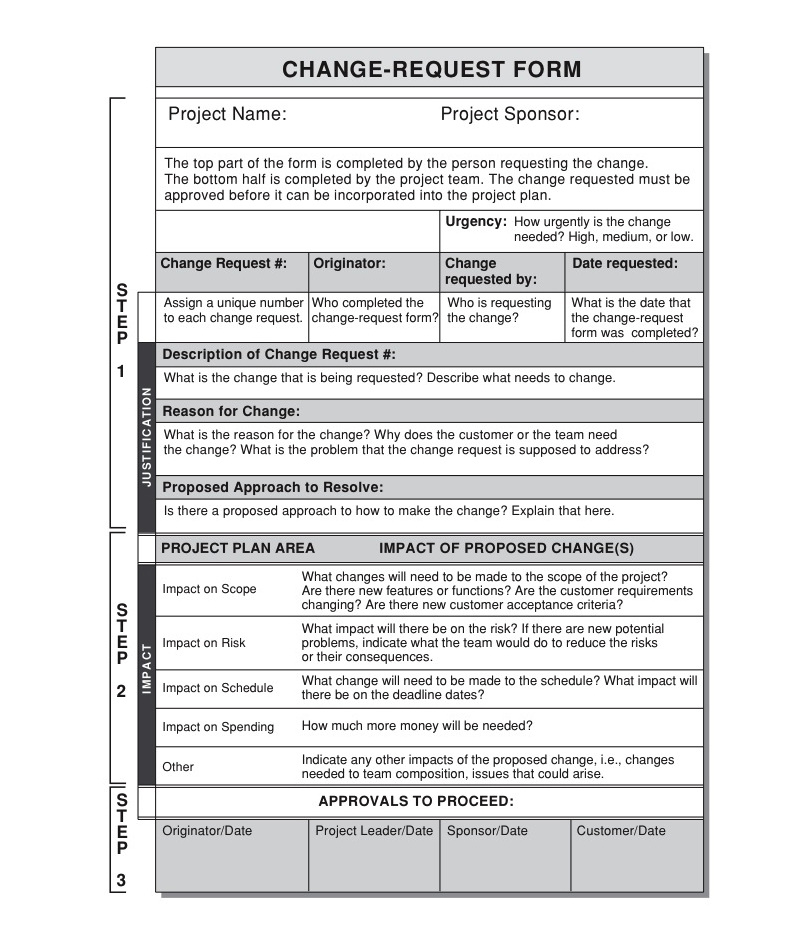
It assists in systematically tracking and evaluating proposed changes, ensuring that project scope, timeline, or budget modifications are carefully considered and approved.
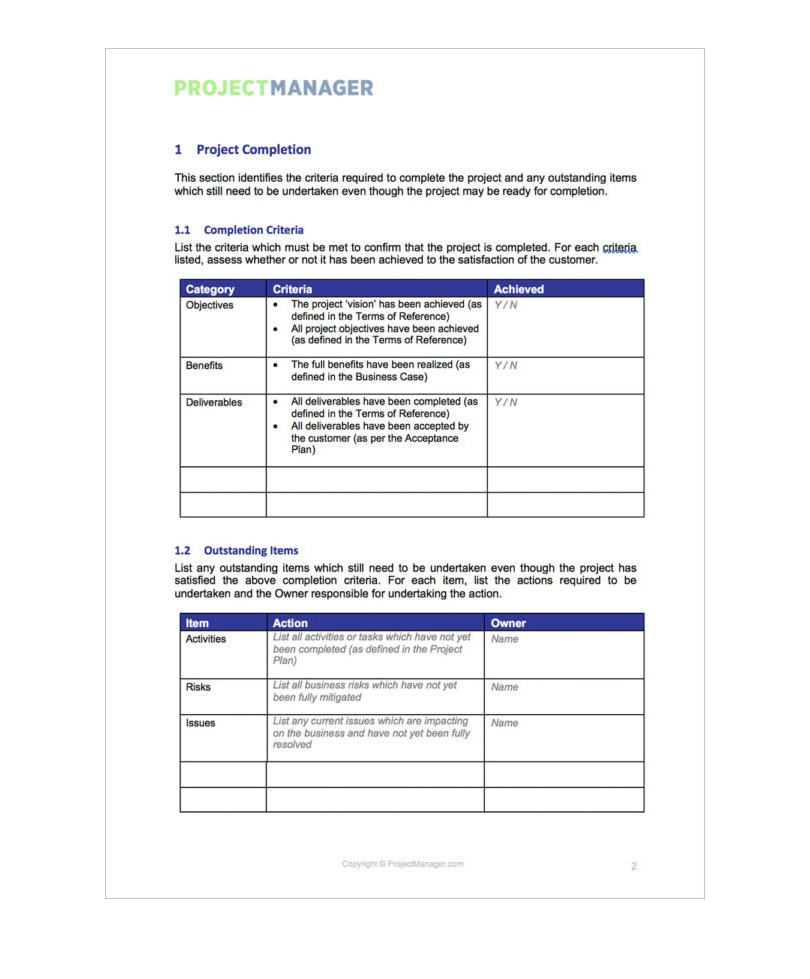
It assists in formally concluding the project, documenting its outcomes, successes, and lessons learned, and facilitating organizational learning and improvement for future projects.
To write impactful project documentation, you need a knowledgeable team. But to bring the documentation to life and share it with key stakeholders, you need the support of a solid tool.
Depending on your project’s size, scope, and requirements, you may need a simple tool with basic features or an advanced tool with unique functionality. Different kinds of online documentation software are available today, but how do you know which one is worth the investment?
Keep an eye out for these top features when looking for project documentation software:
These are the standard features that any tool you pick must have. Depending on your requirements, you can also opt for tools with advanced features like reports and version control.
See how Descartes Systems (Germany), one of the leading manufacturers of inventory management and warehouse logistics solutions in the e-commerce industry, chose ProProfs Knowledge Base for managing their end-user documentation.
“Our end-user documentation is constantly growing with ProProfs. We are happy!”
Erik Uhlich, Product Manager, Descartes Systems (Germany) GmbH
Project documentation is a prerequisite to successful project execution and delivery. With up-to-date documentation, you can easily track progress, identify bottlenecks, and fix them quickly. To curate an impactful project document, bring all information to a central space, add relevant articles for different stages of project management, and give them a proper structure.
All these steps can be efficiently executed with a robust project documentation tool like ProProfs Knowledge Base. Its pre-approved project documentation templates and the AI-powered WYSIWYG text editor make creating content on the go fast and convenient. You can collaborate with your team members using internal comments, too.
With its contextual help, you can easily guide users on certain features, explain complicated terms, and provide additional information with tooltips, lightboxes, and popups. You may explore the tool to know more.
FREE. All Features. FOREVER!
Try our Forever FREE account with all premium features!